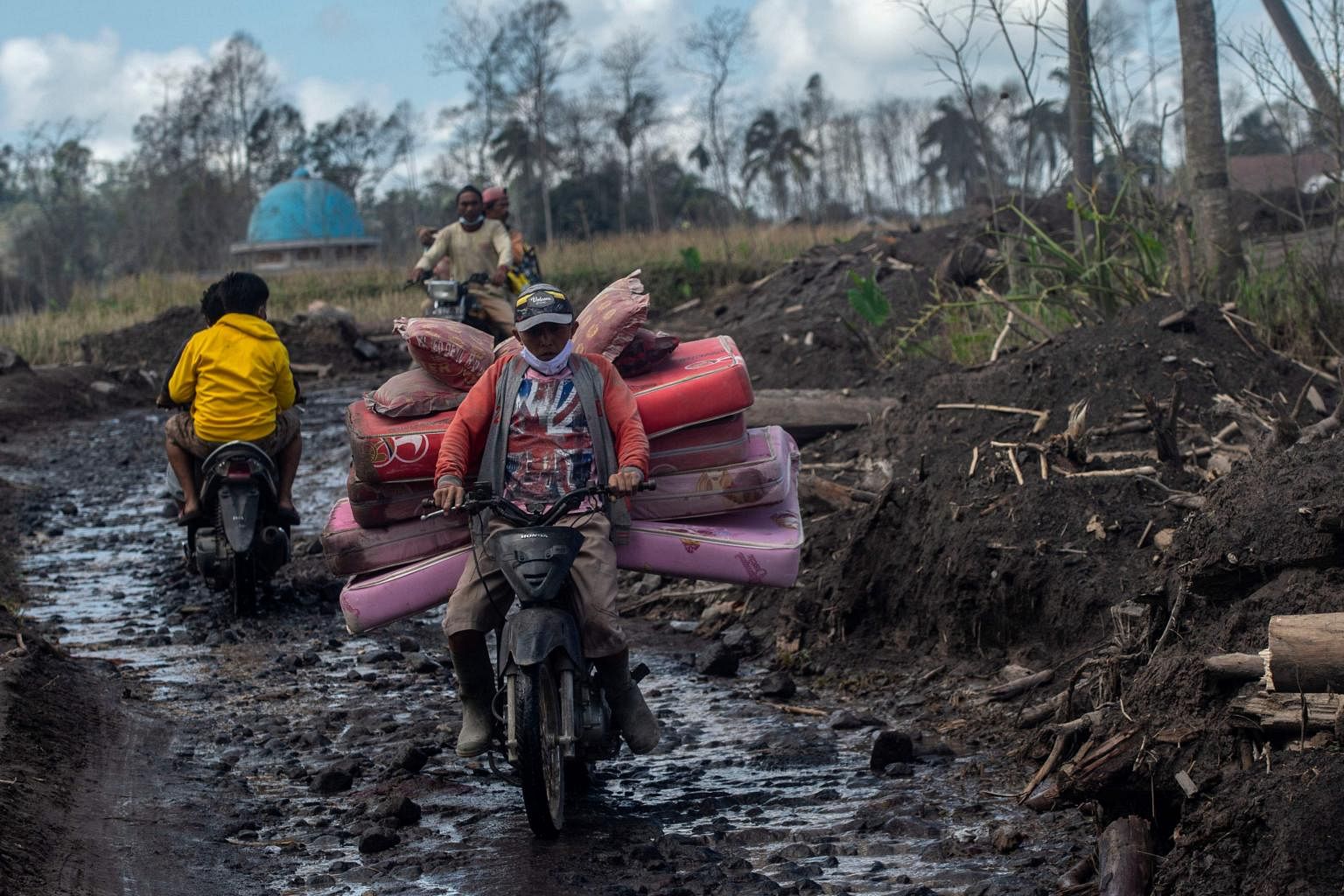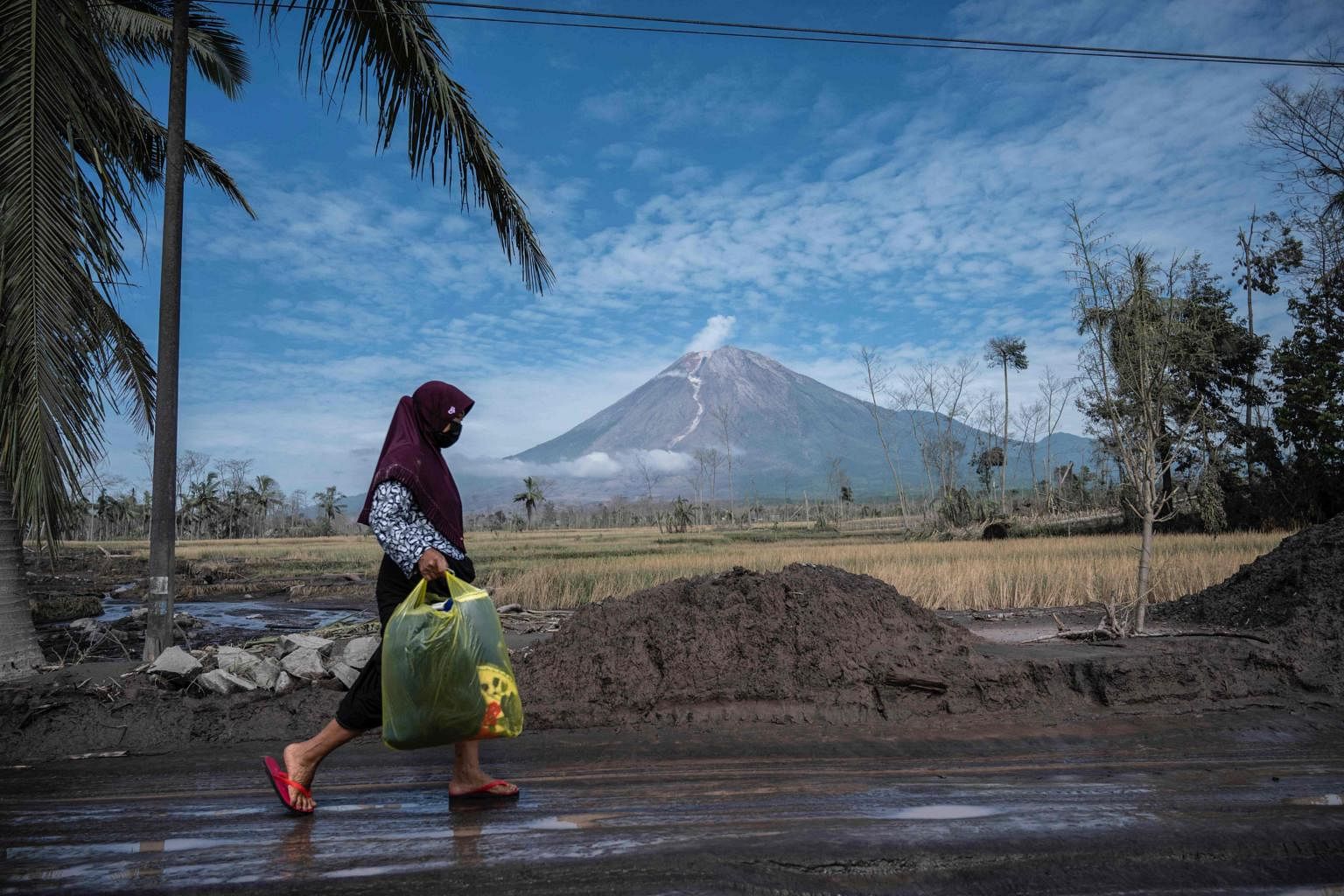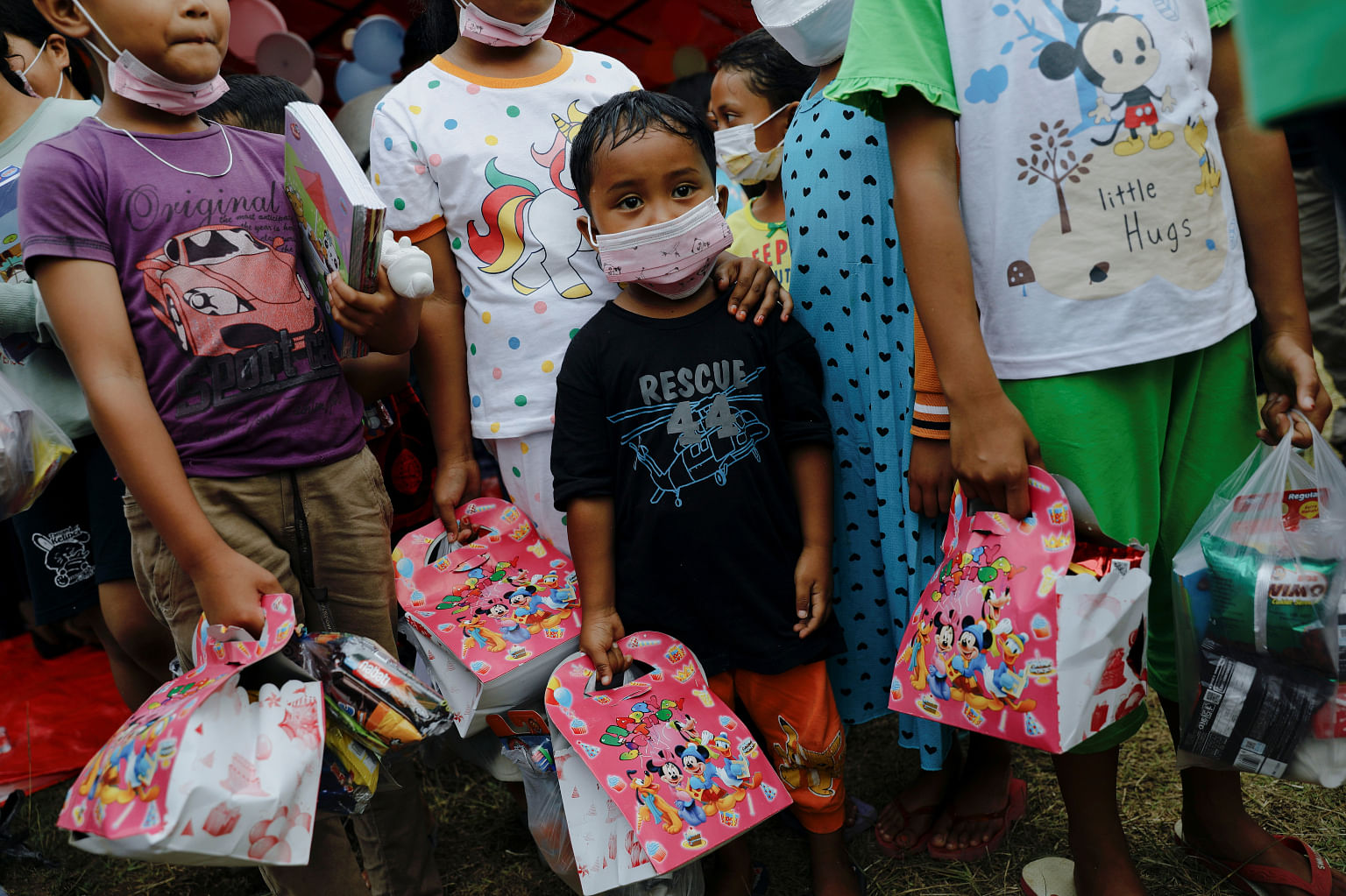'I'm scared': Traumatised survivors of Indonesia's volcano eruption hope to relocate
Sign up now: Get ST's newsletters delivered to your inbox

Rescue workers conduct a search operation at Curah Kobokan village in Lumajang, Indonesia, on Dec 10, 2021.
PHOTO: AFP
Follow topic:
JAKARTA - Haunted by trauma, survivors of the deadly Mount Semeru eruption earlier this month in Lumajang, East Java, are hoping for a relocation of their settlement to avert recurrent danger.
After taking shelter in a school for a few days, Ms Suprih Miyati, 40, ventured home to check if she could save some of her belongings. Parts of the roof of her house had collapsed, while furniture and other stuff were covered in ash, making them impossible to retrieve.
"I want a relocation. I'm scared here. If there are similar incidents again, it will be hard to escape," the housewife told The Straits Times.
Located at the base of the volcano, her village of Supiturang in Pronojiwo district was among the worst hit when Java's tallest mountain erupted on Dec 4, sending ash clouds and pyroclastic flows that have so far claimed 46 lives.
"We thought it was a usual flood. But it turned out to be lava flow. Suddenly, it was all black," Ms Suprih said, recounting the moment before she fled with her husband and 19-year-old son to a relative's house. "Until now I still remember it. It makes me shiver."
Eight days after the Semeru eruption, rescuers were on Sunday (Dec 12) still scrambling to search for survivors under the threat of bad weather and fresh volcanic activity. Small eruptions occurred on Sunday morning, Kompas TV reported.
Rescue operations have been extended until Monday to find those missing, including sand miners in the area.
Indonesia's geological agency has advised locals not to travel within 5km of Semeru crater as the air nearby is heavily polluted.
But, like Ms Suprih, many residents of the affected villagers have been venturing back to their houses to salvage their belongings or tend to livestock, despite a ban issued by the authorities.
A few farmers on Saturday harvested mature rice crops in the village of Sumbermujur, one of the worst-affected areas, Antara news agency reported.
Another Supiturang resident, Mr Buari, went back to his wrecked house to get some money and a few documents. Some glass windows and doors were broken, while thick ash filled the house, including the living room.
"I want to take certificates and a little money, but I'm scared. It's still hot inside (my house)," he told ST.

Villagers commuting in Curah Kobokan village in Lumajang, on Dec 10, 2021.
PHOTO: AFP
When the volcano erupted, the 63-year-old farmer was working in the nearby farming field, now wholly submerged in thick grey ash.
"I saw cold lava flows in the farming field. Then when I looked up, there was smoke underneath the volcano. I fled," he recalled. "Who dares to live here? The only way out is to ask the government for a place."
An area of about 2,400ha was devastated by the eruption, according to the National Research and Innovation Agency.
The Centre for Volcanology and Geological Hazard Mitigation last week sent a team of researchers to Semeru to map areas too dangerous for villagers to inhabit. The authorities are assessing locations to relocate an estimated 2,000 houses in vulnerable areas destroyed by the eruption.

A villager evacuates from her damaged home at Curah Kobokan village in Lumajang on Dec 8, 2021.
PHOTO: AFP
"Observing the spatial layout and disaster mapping, we'll choose a safe zone," Lumajang deputy regent Indah Amperawati was quoted as saying by local online news site Tribun Jatim.
More than 6,000 evacuees have sought refuge in village halls, schools and other venues. Around 3,000 houses and 33 public facilities, including a vital bridge connecting Lumajang and the neighbouring regency of Malang, were destroyed.
At least 14 people with burn injuries were being treated at a local hospital. Meanwhile, after staying in shelters for more than a week, a number of evacuees complained of illnesses, such as dizziness and breathing problems.
Volunteers have visited some temporary shelters to play games with children and use storytelling to heal their trauma. The local education agency plans to hold school sessions at the makeshift shelters on Monday.

Children affected by the eruption of Mount Semeru volcano receive gift packages at a temporary shelter in Penanggal, Lumajang, on Dec 9, 2021.
PHOTO: REUTERS
At more than 3,600m high, Mount Semeru is one of nearly 130 active volcanoes in Indonesia, which straddles the Pacific Ring of Fire, where tectonic plates collide and cause frequent seismic and volcanic activities, including earthquakes that are sometimes followed by tsunamis.
Mount Semeru's last major eruption occurred in December last year. It prompted thousands to evacuate and damaged villages.

